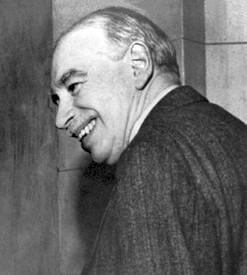At SmartCapitalMind, we're committed to delivering accurate, trustworthy information. Our expert-authored content is rigorously fact-checked and sourced from credible authorities. Discover how we uphold the highest standards in providing you with reliable knowledge.
What Are the Different Types of Macroeconomic Models?
The field of economics is replete with different types of macroeconomic models that are designed to achieve different objectives. Included in the differing classes are simple theoretical models (STM), empirical forecasting models (EFM), dynamic stochastic general equilibrium (DSGE) models, and agent-based computational economics (ACE) models. STM macroeconomic models are normally comprised of simple diagrams and/or equations that aim to describe an economy in whole. EFM models mainly use historical data and observations in an attempt to forecast future macroeconomic outcomes. Models like the DSGE include frameworks that seek to predict the effects of changes in economic policy, while the ACE models aim to understand macroeconomic relations by going somewhat in detail on a microeconomic level.
Macroeconomic models, such as STMs, are composed of diagrams and/or equations and deal with several variables. These include aggregate measures, such as gross domestic product (GDP) and unemployment rates. STM models include the Investment Saving/Liquidity preference Money supply (IS/LM) model and the Mundell-Fleming model. The IS/LM model, for example, has the main function of showing how interest rates are related to real output concerning the goods and services sector and the money market.

EFM models are built to make use of statistical methods to attempt forecasting possible scenarios. These models use historical data to estimate and understand the relationship between different macroeconomic variables. Whereas STM models are mainly concerned with aggregate measures of an entire economy, EFM models do sometimes go in detail. In doing so, they may, for example, study relationships between employment and investment in a particular industry.
Models like DSGE include two main opposing frameworks. One is known as the real business cycle model, and the other is the New Keynesian DSGE model. The real business cycle model consists of macroeconomic models that are based on a theory that claims, among other facts, that business cycle fluctuations are to a great extent accounted for by real shocks. In economics, these are unexpected and unpredictable events that have either negative or positive impacts on economies. The New Keynesian DSGE framework underpins models mainly based on the theory that governments and central banks should intervene in an economy when necessary in order to stabilize the economic environment.
Finally, ACE models attempt to break-down macroeconomic relationships into more industry-focused microeconomic ones. These models identify individual agents active in an economy, such as households and firms. Essentially, the models study the interaction between the said agents. In a basic sense, after studying a significant number of interactions between agents, the individual outcomes can then be combined with others to create aggregate macroeconomic relationships, which can then be studied. Furthermore, most macroeconomic models are noted to have their strengths and weaknesses, so economists continually tweak them in an attempt to reinforce the strengths.
AS FEATURED ON:
AS FEATURED ON:











Discuss this Article
Post your comments